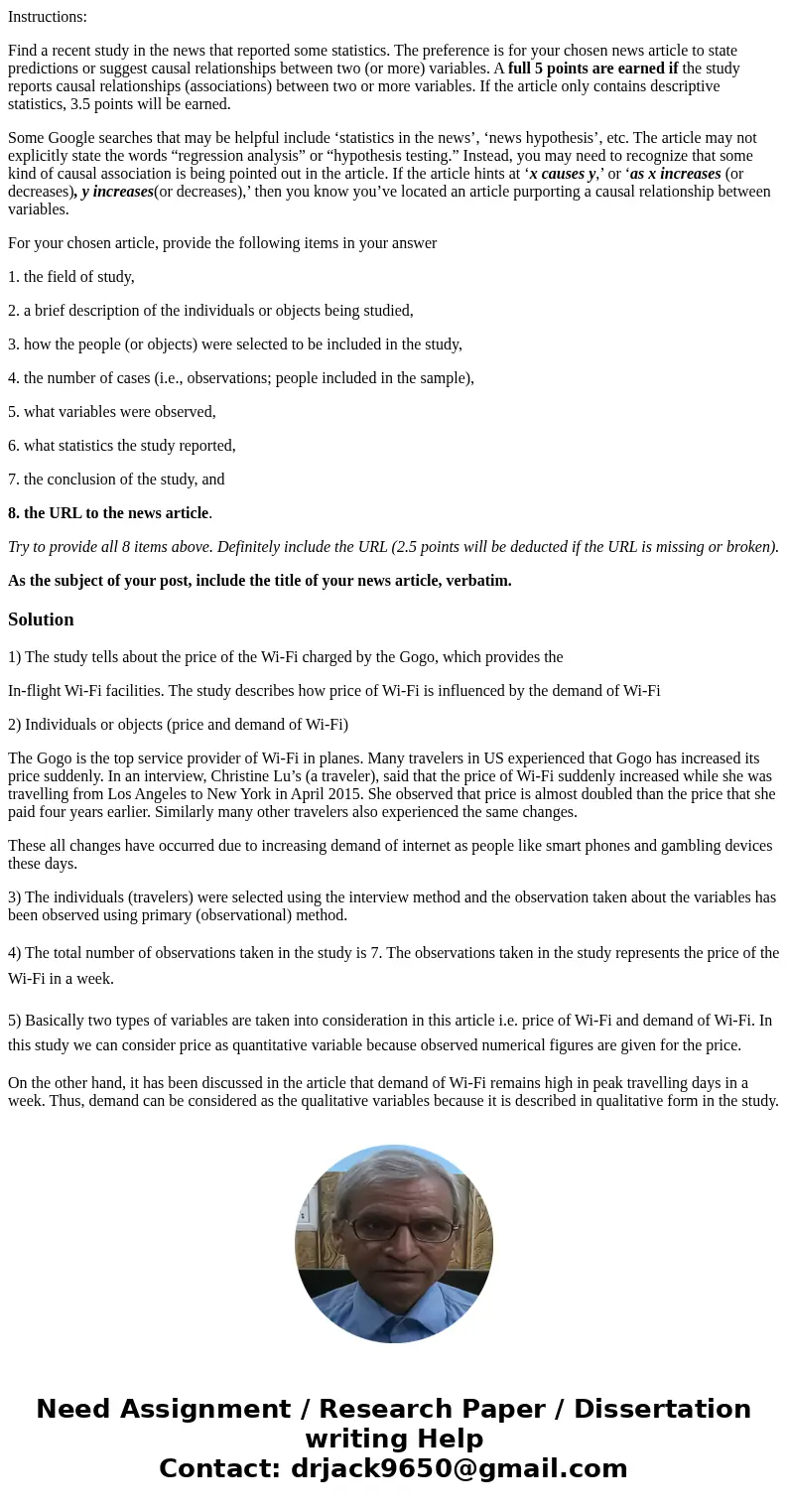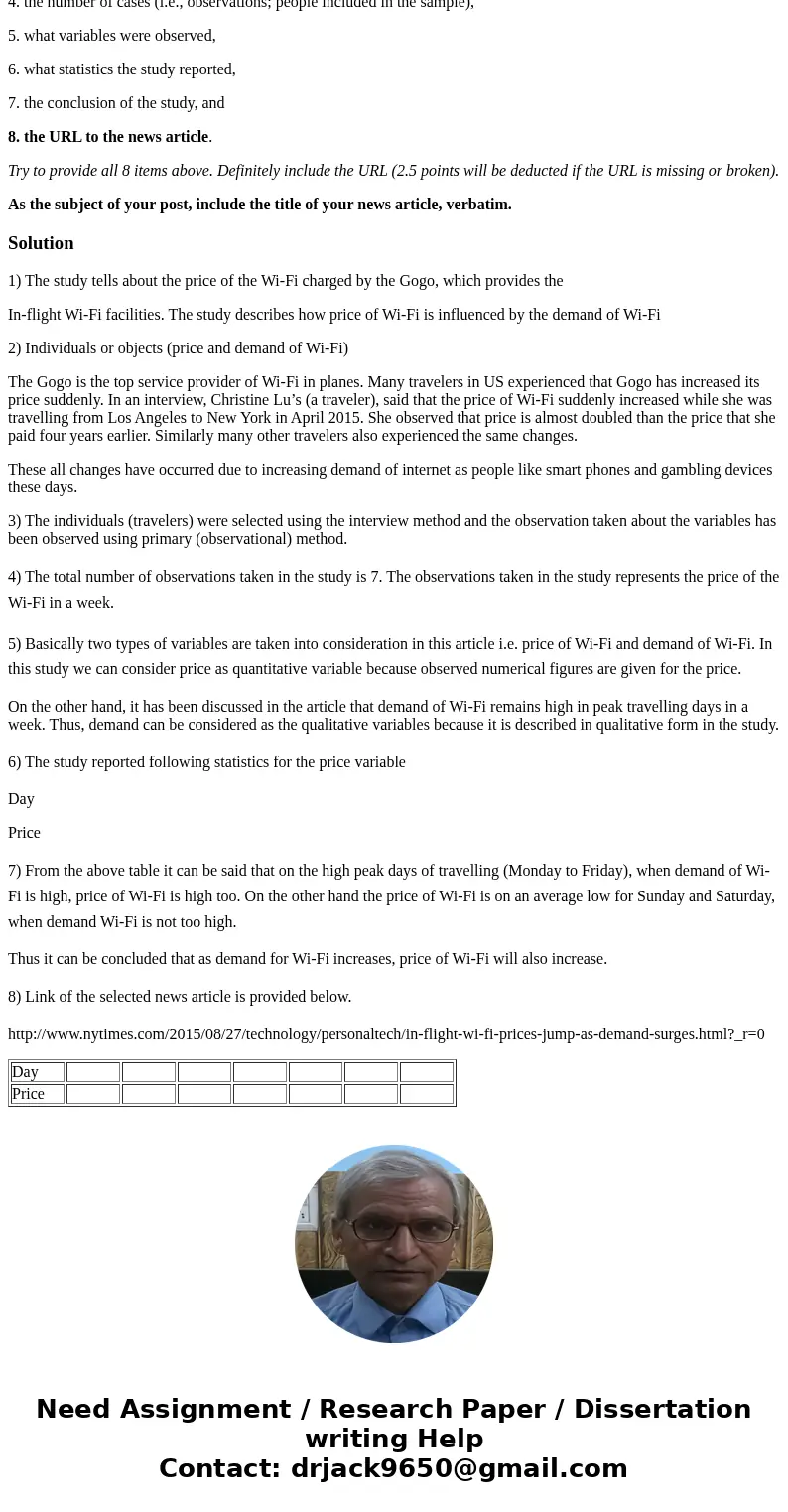Instructions Find a recent study in the news that reported s
Instructions:
Find a recent study in the news that reported some statistics. The preference is for your chosen news article to state predictions or suggest causal relationships between two (or more) variables. A full 5 points are earned if the study reports causal relationships (associations) between two or more variables. If the article only contains descriptive statistics, 3.5 points will be earned.
Some Google searches that may be helpful include ‘statistics in the news’, ‘news hypothesis’, etc. The article may not explicitly state the words “regression analysis” or “hypothesis testing.” Instead, you may need to recognize that some kind of causal association is being pointed out in the article. If the article hints at ‘x causes y,’ or ‘as x increases (or decreases), y increases(or decreases),’ then you know you’ve located an article purporting a causal relationship between variables.
For your chosen article, provide the following items in your answer
1. the field of study,
2. a brief description of the individuals or objects being studied,
3. how the people (or objects) were selected to be included in the study,
4. the number of cases (i.e., observations; people included in the sample),
5. what variables were observed,
6. what statistics the study reported,
7. the conclusion of the study, and
8. the URL to the news article.
Try to provide all 8 items above. Definitely include the URL (2.5 points will be deducted if the URL is missing or broken).
As the subject of your post, include the title of your news article, verbatim.
Solution
1) The study tells about the price of the Wi-Fi charged by the Gogo, which provides the
In-flight Wi-Fi facilities. The study describes how price of Wi-Fi is influenced by the demand of Wi-Fi
2) Individuals or objects (price and demand of Wi-Fi)
The Gogo is the top service provider of Wi-Fi in planes. Many travelers in US experienced that Gogo has increased its price suddenly. In an interview, Christine Lu’s (a traveler), said that the price of Wi-Fi suddenly increased while she was travelling from Los Angeles to New York in April 2015. She observed that price is almost doubled than the price that she paid four years earlier. Similarly many other travelers also experienced the same changes.
These all changes have occurred due to increasing demand of internet as people like smart phones and gambling devices these days.
3) The individuals (travelers) were selected using the interview method and the observation taken about the variables has been observed using primary (observational) method.
4) The total number of observations taken in the study is 7. The observations taken in the study represents the price of the Wi-Fi in a week.
5) Basically two types of variables are taken into consideration in this article i.e. price of Wi-Fi and demand of Wi-Fi. In this study we can consider price as quantitative variable because observed numerical figures are given for the price.
On the other hand, it has been discussed in the article that demand of Wi-Fi remains high in peak travelling days in a week. Thus, demand can be considered as the qualitative variables because it is described in qualitative form in the study.
6) The study reported following statistics for the price variable
Day
Price
7) From the above table it can be said that on the high peak days of travelling (Monday to Friday), when demand of Wi-Fi is high, price of Wi-Fi is high too. On the other hand the price of Wi-Fi is on an average low for Sunday and Saturday, when demand Wi-Fi is not too high.
Thus it can be concluded that as demand for Wi-Fi increases, price of Wi-Fi will also increase.
8) Link of the selected news article is provided below.
http://www.nytimes.com/2015/08/27/technology/personaltech/in-flight-wi-fi-prices-jump-as-demand-surges.html?_r=0
| Day | |||||||
| Price |


 Homework Sourse
Homework Sourse